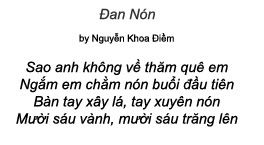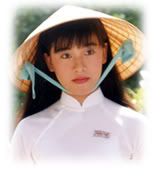Author's posts
May 29 2008
A SOFA for Iraq: How Long Will We Stay
Presently the only legal justification for the US occupation of Iraq is the UN Security Council mandate. In 2006 and again in 2007 the elected Iraqi Parliament attempted to block the extension of the mandate but were “cleanly excised” from the legislation process.
In 2006 the parliament’s efforts were by-passed by the appointed Iraqi Cabinet. In 2007 their resolution was passed, became law of the land and was received in good order by the UN special envoy, Ashraf Qazi, but never distributed to the Security Council members, as is required under the U.N. resolution that governs the mandate.
However, as per Secretary-General Moon’s report to the Security Council dated Oct. 15, the law that had been passed by the duly elected legislature of Iraq had become nothing more than a non-binding resolution.
The existing UN mandate under which US forces remain in Iraq will expire in December. Let’s take a look at what comes next.
May 29 2008
A SOFA for Iraq: How Long Will We Stay
Presently the only legal justification for the US occupation of Iraq is the UN Security Council mandate. In 2006 and again in 2007 the elected Iraqi Parliament attempted to block the extension of the mandate but were “cleanly excised” from the legislation process.
In 2006 the parliament’s efforts were by-passed by the appointed Iraqi Cabinet. In 2007 their resolution was passed, became law of the land and was received in good order by the UN special envoy, Ashraf Qazi, but never distributed to the Security Council members, as is required under the U.N. resolution that governs the mandate.
However, as per Secretary-General Moon’s report to the Security Council dated Oct. 15, the law that had been passed by the duly elected legislature of Iraq had become nothing more than a non-binding resolution.
The existing UN mandate under which US forces remain in Iraq will expire in December. Let’s take a look at what comes next.
May 10 2008
Senators Want Iraq to Pay for US Occupation
Last month’s Petraeus – Crocker, progress in Iraq, dog and pony show provided a forum which allowed them to tell us how well we are progressing in our endeavors to provide peace and stability in Iraq. The format was such that few hard questions were asked and few meaningful answers were given.
General Petraeus informs us:
“There has been significant but uneven security progress in Iraq.”
The gains, however, are “fragile and reversible,” he says, as he begins to outline a plan for a 45-day “period of consolidation and evaluation” to follow the end of the “surge” of extra American forces in July, before any more troops would be withdrawn.
“This process will be continuous, with recommendations for further reductions made as conditions permit,” he added. “This approach does not allow establishment of a set withdrawal timetable.”
There were no major surprises from Petraeus and Crocker, more wait and see, stall and delay. However there was something new and very significant from the Senators doing the questioning.
Apr 29 2008
Sanctioning Iran: Foreign Policy 101
Philip Agee died on 9 January of this year in Havana, Cuba. He was 72.
Agee joined the Central Intelligence Agency in 1957 and worked as a case officer in several Latin American countries. He later claimed: “My eyes began to open little by little down there as I began to realize more and more that all of the things that I and my colleagues were doing in the CIA had one goal which was that we were supporting the traditional power structures in Latin America. These power structures had been in place for centuries, wherein a relative few families were able to control the wealth and income and power of the state and the economy, to the exclusion of the majority of the population in many countries. The only glue that kept this system together was political repression. I was involved in this. Eventually I decided I didn’t want anything more to do with that.”
Agee resigned in 1969. His book, Inside the Company: CIA Diary, was an instant best-seller and was eventually published in over thirty languages. An Agee interview with Amy Goodman on Democracy Now is available here.
One very important term often used by our government, military and corporate leaders is one which is almost never clealy defined. It hints at noble ideals. As a naive schoolboy in the ’50s or as an indoctrinated enlisted Marine in the late ’60s concepts such as spreading freedom and democracy, and freeing the world of injustice might have come to mind. The term is “US strategic interests”, or simply “our national interests”.
Apr 09 2008
Food as a Weapon – The Rape of Iraq
In 1948 George Kennan, who at the time was a senior US State Department planning official, wrote:
We have about 50% of the world’s wealth but only 6.3% of its population. This disparity is particularly great as between ourselves and the peoples of Asia. In this situation, we cannot fail to be the object of envy and resentment. Our real task in the coming period is to devise a pattern of relationships which will permit us to maintain this position of disparity without positive detriment to our national security.
To do so, we will have to dispense with all sentimentality and day-dreaming; and our attention will have to be concentrated everywhere on our immediate national objectives. We need not deceive ourselves that we can afford today the luxury of altruism and world-benefaction.
Later on, in April of 1974 President Gerald Ford, who had replaced Nixon, issued National Security Study Memorandum 200. The title was Implications of Worldwide Population Growth for US Security and Overseas Interests. President Ford signed an Executive Order making NSSM 200 official US Government Policy. It dealt with food policy, population growth and strategic raw materials. The NSSM was the work of Henry Kissinger and was secret at the time it was issued.
F. William Engdahl, has written an excellent, though somewhat obscure, book with the title Seeds of Destruction. This diary is based largely on Engdahl’s book. Quotes are from his book unless noted otherwise.
National Security Study Memo 200, issued in 1974, promoted population control in raw materials-rich developing countries. Thirteen developing countries were named as being threats to future US exploitation of their resources unless drastic measures were taken to reduce their population growth. In the NSSM Kissinger put it this way:
The world is increasingly dependent on mineral supplies from developing countries, and if rapid population growth frustrates their prospects for economic development and social progress, the resulting instability may undermine the conditions for expanded output and sustained flows of resources…
Feb 26 2008
The Agent Orange Court Decision
Many are aware of the decision handed down on Friday by a Federal Appeals Court in New York. The court ruled that the Vietnamese plaintiffs could not pursue claims against Dow Chemical Company, Monsanto and nearly 30 other companies for ailments caused by the use of herbicides which
the plaintiffs appealed a lower court decision that dismissed a civil suit seeking class-action status on behalf of more than 3 million Vietnamese people against the chemical companies.
The lawsuit contended that agent orange caused ailments, including birth defects and cancer.
The United States has maintained there is no scientifically proved link between the wartime spraying of herbicides and the claims of dioxin poisoning by more than 3 million people in Vietnam.
By 1983, 9170 veterans had filed claims for disabilities that they said were caused by Agent Orange. The VA denied compensation to 7709, saying that a facial rash was the only disease associated with exposure.
Feb 24 2008
The Candidates and the Occupation of Iraq
One of the least reported issues in the continuing war and occupation of Iraq is that of plans for permanent military bases and a long term occupation of Iraq by the US Military. John McCain has made the statement that the US should stay in Iraq for the next 100 years.
As per CNN last month, at a town hall meeting in New Hampshire, a crowd member asked McCain about a Bush statement that troops could stay in Iraq for 50 years. “Maybe 100,” McCain replied.
Let’s look at the responses from Hillary and Obama.
The two following quotes are from the CNN link noted above in the introduction.
“He said recently he could see having troops in Iraq for 100 years,” Clinton said at an Arlington, Virginia, rally last week in a line she’s repeated on the campaign trail. “Well, I want them home within 60 days of my becoming president of the United States.”
Obama took a similar tack.
“Sen. McCain said the other day that we might be mired for 100 years in Iraq — which is reason enough not to give him four years in the White House,” Obama has said on several occasions.
and the come-back from McCain…
Feb 15 2008
Mission Accomplished – The Door to Iraq’s Oil Will Soon Be Open
George W. Bush, his neo-con backers, his supporters in Congress, from both sides of the isle, the establishment media, the MIC and on Wall Street have accomplished their mission in Iraq. If there was ever any doubt about what that mission was then perhaps this article from Asia Times will make it clear. The article is rather long and so I’ll try to provide some of the highlights here. The blockquotes are from that article.
And, as former Fed Chief Alan Greenspan wrote in his memoir – The Age of Turbulence: Adventures in a New World. “I am saddened that it is politically inconvenient to acknowledge what everyone knows: The Iraq war is largely about oil.”
It appears that John McCain might well get his wish – 100 years of US occupation of Iraq.
Iraqi Oil Minister Shahristani is described in this article as being “not too religious, not too political, not too secular and not too pro-American. He is a Shiite who was imprisoned by Saddam Husein and held in solitary confinement by Saddam Hussein for 10 years. He is now the Oil Minister of Iraq.
Shahristani finds himself in an enviable position as a creator of wealth for the Western world. He holds the key to the door that opens out to the magical world of Iraqi oil.
Feb 11 2008
Torture Amnesia – Shame on America
There are some things one never forgets. I’ll never forget my brief encounter with torture 40 years ago. Our patrol engaged some VC hidden in a tree-line and a firefight ensued. The tree-line held a small hamlet. Predictably the village people fled in our direction. They fled because they knew their village would most likely be shelled, strafed or bombed. It was.
Our Viet counterparts detained a young lady they suspected of being a VC, a nurse they claimed. We brought her back to our dilapidated compound where they bound her, stripped off her shirt and attached wires to her nipples and proceed to use a crank operated electrical device to shock her. Needless to say it was thoroughly disgusting. Through it all she refused to talk. I admired her courage. I don’t know where they sent her but I hope she survived.
In April 2004, Americans were stunned when CBS broadcast those now-notorious photographs from Iraq’s Abu Ghraib prison, showing hooded Iraqis stripped naked while U.S. soldiers stood by smiling. As this scandal grabbed headlines around the globe, Defense Secretary Donald Rumsfeld insisted that the abuses were “perpetrated by a small number of U.S. military personnel”…
Feb 08 2008
Torture by the US – A History
There are some things one never forgets. I’ll never forget my first, and only, encounter with torture some 40 years ago. Our daylight patrol, some 4 or 5 Marines and probably the same number of Vietnamese Province level militia troops engaged some unseen VC hidden in a tree-line and a firefight ensued. The tree-line held a small hamlet and predictably the village people carrying with them their most valued possessions fled in our direction. The fled because they knew their village would most likely be shelled, strafed or bombed. As it turned out the village was strafed by a couple of passes of a fighter jet spraying the area with 40 mm cannon fire.
Our Vietnamese counterparts detained a young lady they said was a VC, a nurse they claimed. We brought her back to our ragged compound where they bound her, stripped off her shirt and attached wires to her nipples and used a crank operated electrical device to shock her. Needless to say it was thoroughly disgusting. Through it all she refused to talk. I admired her courage. They took her off to the District Hq and we never heard any more about her.
In April 2004, the American public was stunned by televised photographs from Iraq’s Abu Ghraib prison showing hooded Iraqis stripped naked, posed in contorted positions, and visibly suffering humiliating abuse while U.S. soldiers stood by smiling. Secretary of Defense Donald Rumsfeld quickly assured Congress that the abuses were “perpetrated by a small number of U.S. military,” whom New York Times columnist William Safire soon branded “creeps.”
Most Americans became aware of torture when Seymour Hersh broke the story about Abu Ghraib. Where did it all begin? I witnessed torture 40 years ago and have come to wonder why, where and when it all started.
After French soldiers used the technique on Henri Alleg during the Battle for Algiers in 1957, this journalist wrote a moving description that turned the French people against both torture and the Algerian War. “I tried,”
Alleg wrote, “by contracting my throat, to take in as little water as possible and to resist suffocation by keeping air in my lungs for as long as I could. But I couldn’t hold on for more than a few moments. I had the impression of drowning, and a terrible agony, that of death itself, took possession of me.”
Let us think about the deeper meaning of Alleg’s sparse words–“a terrible agony, that of death itself.” As the water blocks air to the lungs, the human organism’s powerful mammalian diving reflex kicks in, and the brain is wracked by horrifically painful panic signals–death, death, death. After a few endless minutes, the victim vomits out the water, the lungs suck air, and panic subsides. And then it happens again, and again, and again–each
time inscribing the searing trauma of near death in human memory.
Feb 07 2008
Viet Nam – Land of the Poem Hat & the Ao Dai
 This essay is obviously not about the presidential primaries, domestic politics, the economy, the occupation of Iraq or foreign policy. The boomers among us will see some historical relevance. For some others it might bring back few special memories. This is a diary about a simple but elegant hat, a hat that some might consider to be symbolic of a poignant era in history, along with some additional words and photos of the flowing ao dai that is often worn together with the hat.
This essay is obviously not about the presidential primaries, domestic politics, the economy, the occupation of Iraq or foreign policy. The boomers among us will see some historical relevance. For some others it might bring back few special memories. This is a diary about a simple but elegant hat, a hat that some might consider to be symbolic of a poignant era in history, along with some additional words and photos of the flowing ao dai that is often worn together with the hat.
A change of pace here. Light reading and an attempt to provide a few eye-pleasing images and perhaps brighten your day a little bit.
The hats are traditionally known as a nón lá or a nón bài thơ. The former term refers to plain conical hat made with latania palm fronds, the latter refers to a conical hat with poetry and decoration placed between the two layers of leaves of the palm fronds. Bài thơ is the Viet word for poem.
The conical hat is a symbol of traditional Vietnamese life. It is practical and fashionable. It’s extremely durable, very light weight and provides protection from the tropical sun and from monsoon rains. It is worn throughout Viet Nam and also appears in rural areas of neighboring Laos and bordering areas of Cambodia. It is worn by farmers, fishermen, merchants, fashion models, students, adults, children, men, women, city-dwellers and country folk. It is seen in the fields, on the streets, in the market places and in traditional ceremonies.
 Vietnamese conical hats are made from the dried leaves of the latania, a palm with fan-shaped fronds, layered over 16 brims fashioned from small diameter, cylindrical-shaped strips of bamboo.
Vietnamese conical hats are made from the dried leaves of the latania, a palm with fan-shaped fronds, layered over 16 brims fashioned from small diameter, cylindrical-shaped strips of bamboo.
Conical hats are made throughout the country. Different regions have their own versions of the basic nón design. The area around Hue, in central Viet Nam, is quite well known for its poem hats, which are light in weight yet very sturdy, and are inlaid with poems and images of well known landmarks in the Hue area. These are among the most favorite souvenir purchases made by visitors to Hue.
 A view looking inside of the nón bài thơ (image left) shows a sampling of the inlay work. An image of the Thien Mu Pagoda (there are interesting photos of the actual pagoda at this link) can be seen in the lower left-center quadrant of the hat. Though it is difficult to see in the image, there is a poem inlaid in the lower right portion of the photo. The source of this photo is Google Images. One of the poems used is shown below along with an English translation.
A view looking inside of the nón bài thơ (image left) shows a sampling of the inlay work. An image of the Thien Mu Pagoda (there are interesting photos of the actual pagoda at this link) can be seen in the lower left-center quadrant of the hat. Though it is difficult to see in the image, there is a poem inlaid in the lower right portion of the photo. The source of this photo is Google Images. One of the poems used is shown below along with an English translation.
The Vietnamese version of the poem below was provided by my niece. The translation to English is my own.



 Making nón bài thơ has been a traditional craft for many generations in the Hue area. In the Phu Cam neighborhood, on the southern outskirts of Hue, many local residents engage in this craft. A large selection of conical hats for sale can be found a the main market-place along the Perfume River near the Citadel in Hue.
Making nón bài thơ has been a traditional craft for many generations in the Hue area. In the Phu Cam neighborhood, on the southern outskirts of Hue, many local residents engage in this craft. A large selection of conical hats for sale can be found a the main market-place along the Perfume River near the Citadel in Hue.
Nón bài thơ worn with the traditional áo dài (the pronunciation sounds like “ow yai” in the South and transitions to “ow zai” in the North) brings an aura of charm and grace to those women who wear it. Hue school girls wearing white ao dai and non bai tho have become an endless source of inspiration for poets and writers.
The colors of an ao dai are an indication of the age and the status of the wearer. Schoolgirls usually wear white symbolizing purity. As they grow a bit more mature they begin wearing pastel shades. Married women wear patterns and darker colors.
In his 1982 novel Saigon, Anthony Grey described the Ao Dai as “demure and provocative…women seem not to walk, but to float gently beneath the tamarinds on the evening breezes.” It is often said that the ao dai covers everything but hides nothing.
Every ao dai is custom made, accounting for the fit that creates such a flattering look. Stores specialize in their production and a team of cutters, sewers and fitters ensure that the final product will highlight the figure of the wearer. Thuy, a fitter in Ho Chi Minh City, says, “To create the perfect fit, customers take their undergarments and shoes with them for the fittings.” The pants should reach the soles of the feet and flow along the floor.
Source – Things Asian
The photo in the blockquote above, on the right side, is from a collection by Tanya Truong. Her slide show with larger images may be seen here. Very nice!
More ao dai images can be viewed here including one of George W. Bush at the APEC Summit in Hanoi in 2006. I’m sure there are many other people you’d rather see in an ao dai, and there are a few others – much more pleasing to the senses, on the other end of the link.
Jan 25 2008
40 Years – Remembering Tet 1968
In August of 1967 General William Westmoreland claimed to have hurt the enemy so badly that “their major efforts” were limited to the periphery of South Vietnam.
“We have reached an important point when the end becomes to come into view,” General Westmoreland said in his speech to the National Press Club in Washington on November 21, 1967. “We are making progress…it (success) lies within our grasp, the enemy’s hopes are bankrupt.”
Meanwhile –
General Vo Nguyen Giap explained how and why the Hanoi leders had enticed the American forces to the borders of the South in an extended two-part article published in Quan Doi Nhan Dan (The Army of the People) published in September 1967. Giap cited the fighting along the DMZ and in the Central Highlands as principal examples of Hanoi’s strategy at work.
Quoted from A Bright Shining Lie by Neil Sheehan
The Offensive began on the eve of the lunar new year, 30 January 1968. In it’s early hours Westmoreland still contended that the Tet attacks were a diversion and that the real objective was Khe Sanh.

